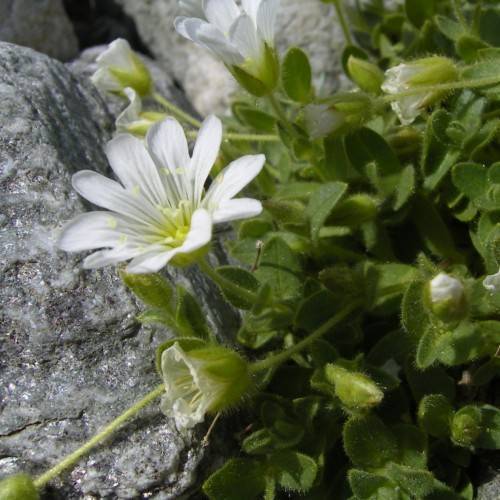
Fischer's Chickweed
Cerastium fischerianum
Also Known As - Fischer's Mouse Ear ChickweedWatering:
Minimal
Hardiness Zone:
Sun:
full sun,part shade
Leaf:
Yes
Growth Rate:
Low
Drought Tolerant:
Yes
Salt Tolerant:
Yes
Invasive:
Yes
watering
Shortstalk Chickweed thrives in moist soil, so it is important to keep the soil moist but not waterlogged. During the summer months, it should be watered around twice a week, allowing the soil to dry out between waterings. During the winter months, watering should be reduced to once a week or even less. It's important to make sure that the soil has drained before the next watering. If the soil is still damp, wait a few days before watering. Too much watering can lead to root rot and other problems.
sunlight
Shortstalk Chickweed typically grows best when exposed to full sunlight for 6 to 8 hours each day. Generally, the plant should receive approximately 3 to 4 hours of direct sunlight for optimal growth, with bright, indirect light filling in the remainder of the photoperiod. Shortstalk Chickweed should be sheltered from direct winds, which can dry out the soil and stunt plant growth.
pruning
Shortstalk chickweed (Cerastium brachypodum) requires minimal pruning for proper growth and health. It is recommended that you prune the plant in the early spring before new growth begins and again in late summer to shape the plant and remove any dead or diseased growth. Make sure to use clean, sharp pruning tools when pruning, and avoid cutting into the green stems. For best results, prune no more than 1-third of the plant at a time. Deadheading spent flowers may help encourage new blooms and keep the plant looking tidy.
